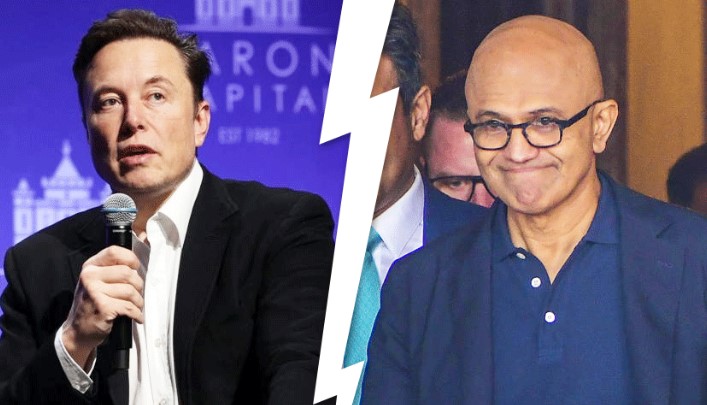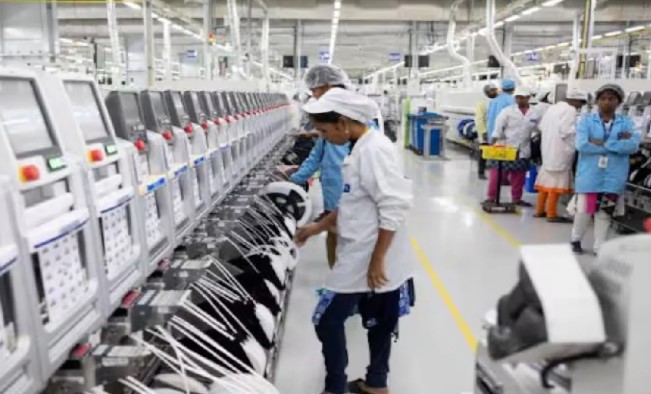
Apple Accelerates iPhone Production in India Amid US-China Trade Tensions
In a strategic shift driven by rising geopolitical uncertainties, Apple is rapidly expanding its iPhone production in India. With mounting trade tensions between the United States and China, the Cupertino-based tech giant is fast-tracking plans to reduce its reliance on Chinese manufacturing and turn India into a central hub for iPhone assembly and exports — especially to the American market.
According to sources cited by Reuters, Apple has already started shipments from India and is heavily investing in new facilities. This move not only diversifies Apple’s supply chain but also aligns with India’s ambition to become a global electronics manufacturing powerhouse.

New iPhone Plants Signal India’s Rising Manufacturing Status
A newly operational iPhone assembly plant, run by Tata Electronics in Hosur, Tamil Nadu, has begun production. Though currently limited to assembling older iPhone models on a single line, this marks a significant step in Tata’s growing role within Apple’s supply chain.
Meanwhile, Taiwanese contract manufacturer Foxconn, Apple’s long-term partner, is constructing a $2.6 billion facility in Bengaluru. Four sources, including a government official, have confirmed that this new plant is close to beginning trial production. It will initially assemble iPhones on one production line and has the capacity to produce 300 to 500 units per hour. The facility is expected to handle future models, including the iPhone 16 and iPhone 16e.
The Foxconn plant is slated for full completion by December 2027, and is expected to generate employment for up to 50,000 people — a boost to local economies and a significant vote of confidence in India’s manufacturing capabilities.
Table of Contents
Toggle
US Tariffs Drive Apple’s Urgent Shift
The acceleration in iPhone production in India follows the imposition of steep tariffs by the US government on Chinese imports. Under former President Donald Trump, tariffs exceeding 100% have been placed on various Chinese goods. Although iPhones have so far been exempt, Washington has warned that this could change. In response, Apple has taken proactive steps to shield its operations from potential disruption. In March 2025, the company shipped a record 600 tons of iPhones worth $2 billion to the US from India. Of these, Foxconn contributed $1.3 billion worth of shipments, while Tata supplied the remainder. This milestone underscores how quickly India is rising as a key manufacturing base for Apple.

India’s Growing Share in Global iPhone Manufacturing
Historically, China has produced over 75% of the world’s iPhones, making it Apple’s dominant production hub. But this concentration also poses a strategic risk. Recent geopolitical frictions and supply chain disruptions during the COVID-19 pandemic have pushed Apple to diversify.
As of 2025, India now accounts for 18% of global iPhone production, according to research firm Counterpoint. Apple’s internal roadmap suggests an even bolder future: the company aims to produce the majority of iPhones sold in the US at Indian factories by 2026.
This transition marks a tectonic shift in global electronics manufacturing. India’s improved infrastructure, skilled labor force, and favorable government policies — including the Production Linked Incentive (PLI) scheme — have made it an attractive destination for high-end smartphone production.

Tata's Rapid Rise as a Key Apple Supplier
While Foxconn remains Apple’s largest global manufacturing partner, Tata Electronics has quickly become a significant player in Apple’s supply chain. Once known primarily for steel, automobiles, and IT services, the Tata Group’s pivot to electronics manufacturing is both bold and successful.
With multiple iPhone assembly units now active or under development, Tata and Foxconn together will soon operate five iPhone production facilities in India. This scale will not only meet domestic demand but also allow India to become a major iPhone export base, particularly for North America and Europe.
Economic and Strategic Implications for India
Apple’s growing iPhone production in India carries broader implications for the Indian economy. It signals a move up the value chain in global manufacturing — from being a software and service hub to a center for high-end electronics production.
This shift is also expected to:
Create thousands of jobs, especially in states like Tamil Nadu and Karnataka.
Boost exports, reducing India’s trade deficit in electronics.
Encourage more global tech companies to consider India as a manufacturing destination.
Furthermore, it enhances India’s standing in the global supply chain landscape, reducing dependence on a single country and increasing geopolitical resilience.
The Road Ahead
Apple’s strategic relocation of iPhone manufacturing is not just a short-term reaction to tariffs or tensions — it is a long-term bet on India’s potential. The company’s investments and supply chain partnerships point toward a future where India plays a central role in the production of its flagship products.
For India, this is a pivotal opportunity. Success in electronics manufacturing could open the doors to similar developments in other tech verticals, from semiconductors to wearables and beyond.
However, challenges remain. India must ensure:
Consistent policy support
Stable infrastructure
High-quality workforce training
Competitive logistics and export systems
If these are addressed effectively, India could solidify its place not just in Apple’s strategy, but in the broader global electronics ecosystem.
Conclusion
Apple’s increased iPhone production in India is a landmark shift that reflects changing global dynamics and growing confidence in India’s manufacturing ecosystem. As tensions persist between the US and China, Apple’s India strategy is not just about contingency — it’s about future-proofing one of the most valuable and complex supply chains in the world. The coming years will likely witness even greater investments, innovation, and influence from India in the global tech arena.
Disclaimer:
The data and information presented are based on reports from Reuters, Bloomberg, and Counterpoint Research. These insights are intended for informational purposes only and do not constitute investment advice.
Centre’s Approval of New Chip Plant in Andhra Sparks Telangana’s Anger Over Alleged Bias
Centre’s Approval of New Chip Plant in Andhra Sparks Telangana’s Anger Over Alleged Bias The Chip plant approval in Andhra Pradesh […]
Elon Musk Warns Satya Nadella About OpenAI After GPT-5 Launch: Microsoft CEO Responds
Elon Musk Warns Satya Nadella About OpenAI After GPT-5 Launch: Microsoft CEO Responds Elon Musk warns Satya Nadella about OpenAI […]
Who Is Shyam Sankar? The Billionaire Technologist Powering Palantir’s AI Boom Shyam Sankar, Palantir Technologies’ Chief Technology Officer, is emerging […]
Rupee at Risk of Lifetime Low as Trump Threatens Tariffs on Indian Goods The rupee at risk of lifetime low […]
Tata Harrier EV Range Test & Review
Tata Harrier EV Range Test & Review Tata Harrier EV range test results are finally out, and the numbers are […]
China Electronics Investment Tied to Tech Transfer in India
China Electronics Investment Tied to Tech Transfer in India The future of China electronics investment in India may rest on […]








